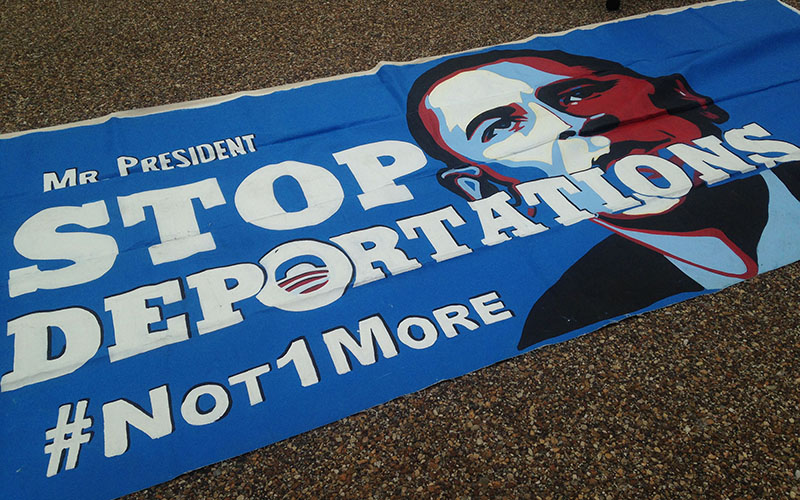
President Barack Obama said he would take action on his own to expand deportation-deferral programs, but those efforts were blocked by federal judge (Photo by Whitney Ogden)
WASHINGTON – Granting deportation deferral to an estimated 137,000 Arizona residents would add hundreds of jobs annually and billions of dollars over a decade to the state economy, according to a new state-by-state analysis.
The Center for American Progress report, released Monday, claimed that immigrants who are in this country illegally could contribute $230 billion to the gross domestic product over the next 10 years if currently stalled deportation actions are allowed to take effect.
The report looked at President Barack Obama’s proposal to expand DACA – the Deferred Action for Childhood Arrivals – and create a new DAPA – the Deferred Action for Parents of Americans and Lawful Permanent Residents. The president said last fall that he would institute those changes on his own, but they have since been blocked by a federal judge in Texas.
The author of the Center for American Progress report, Silva Mathema, said DAPA and DACA would give currently undocumented residents the ability to learn specific skills and eventually earn greater income. That, in turn, would boost overall economic activity.
DACA dollars
A report from the Center for American Progress claims that enacting deferred-deportation programs would add billions to the U.S. economy, and in Arizona it would:
“Increases in income mean more money to buy things” for those workers, Mathema said.
“That economic activity will create more jobs in the state,” she said.
By Mathema’s estimation, bringing those workers out of the shadows would add $230 billion to the GDP over a 10-year period, and add more than 30,000 jobs per year over that period. In Arizona, approving the deportation-deferral programs would mean $6.2 billion over the decade and 780 new jobs a year in the time, her report said.
But a critic of deferred action said that even if Mathema’s numbers are right, they are not as compelling as they appear at first glance. Ira Mehlman, media director for Federation for American Immigration Reform, noted that the $230 billion is stretched out over 10 years in a $17 trillion U.S. economy.
“That’s $23 billion a year in a $17 trillion economy,” Mehlman said. “Statistically, it adds nothing.”
But a spokeswoman for Rep. Ruben Gallego, D-Phoenix, said added revenue is still added revenue and that that is just another reason to support DACA and DAPA.
“The deferred-action programs will bring in money for the states and federal economy,” said Gallego spokeswoman Pili Tobar in an email. “People have to pay fees to apply for the program, and once they get a work permit they have to pay taxes.”
Tobar noted that “immigrants are consumers and help create jobs across the country as well as open businesses of their own.”
The Center for American Progress report estimated that Arizona had one of highest rates of immigrants who would be eligible for deferred-deportation benefits, at 52 percent, putting the state behind only Idaho and Utah. Arizona ranked eighth or ninth among states for estimates of job creation and GDP increases.
“According to the CAP report, 137,000 people are eligible for DACA or DAPA in Arizona,” Tobar said. “That will definitely have a big economic impact on Arizona, other states and the country overall.”
But Mehlman countered supporters by claiming recent studies have shown that deferred deportation could hurt efforts to reduce unemployment amonn young people, by letting DACA and DAPA recipients fill “jobs that can and probably would be filled by millennials.”
The first DACA protections, which deferred deportation for immigrants who were brought to this country illegally as children, took effect three years ago this month, in June 2012.
The new and expanded programs proposed by Obama would reach as many as 5 million of the 11 million immigrants who are believed to be in this country illegally.
But Mehlman said there is “no momentum” behind the deferred-action programs. He said he does not believe the administration will be able to reverse the Texas judge’s order blocking the actions.
“It looks like they’re going to lose that one,” he said.
But Tobar said Gallego expects the programs to move forward.
“Congressman Gallego supports the deferred action programs and is looking forward to helping the community apply once the 2014 programs go into effect,” she said.